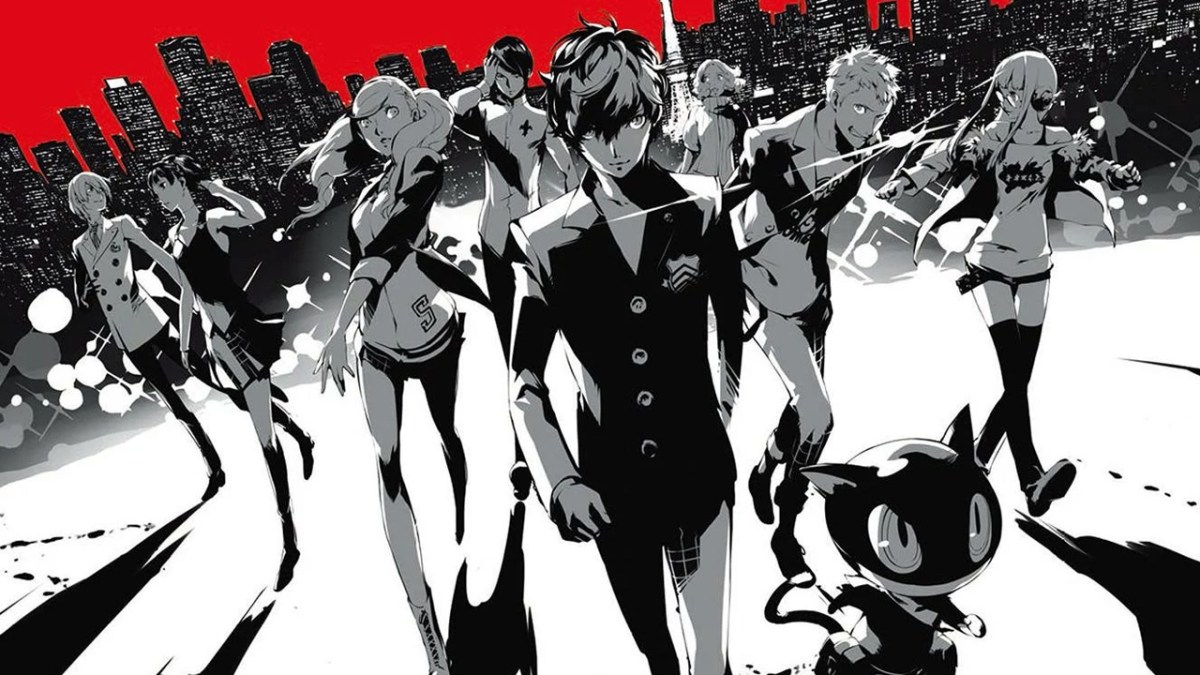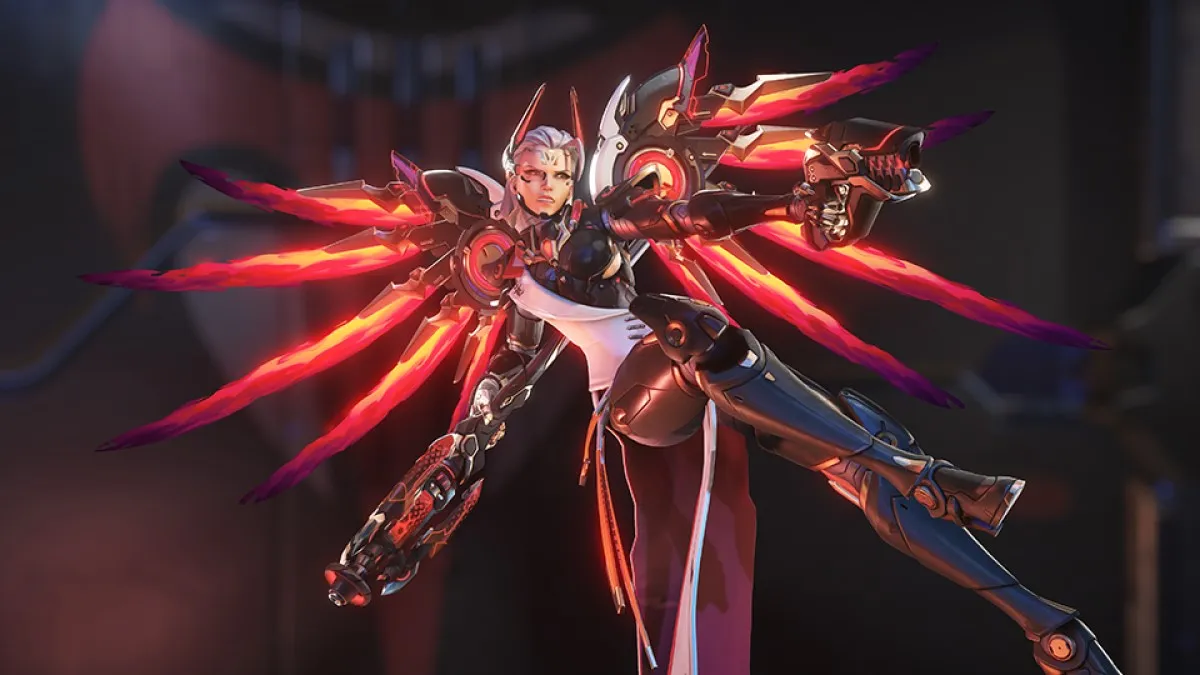Any last surprises?
Wednesday marked exactly a year since many Persona fans dug through their mailboxes with glee to find the newest instalment in their favourite JRPG series. We’d had quite a wait since the Japanese launch the previous September, and the dribs and drabs, that all but the most seasoned of spoiler avoiders had heard, intensified our thirst to go diving right in to the hum-drum of school life and the perilous dungeon crawling.
It’s actually been quite a while since I played Persona 5, though. I finished the game pretty sharpish upon receiving it – by the end of May, I had reached the end and was ready to move on to something else. My copy has since been passed on to friends, and it sank into the background a little; in fact, I’ve played Persona 3 more recently than I’ve played Persona 5. That is not to say that Persona 5 was disappointing or boring, and that I couldn’t wait to get rid of it – no, no. But I’ve had some time and distance to look at the game a little more objectively, and can see where it really shone, and where it fell down in some areas.
So, what’s the deal with Persona 5, now that the initial sheen has worn off? In summary, Persona 5 is nowhere near my favourite addition to the franchise, but it’s still an absolute gem. So crack open a can of Second Maid while we go through some of the biggest hits and misses in the game.

All-out attack!
One of the best aspects of Persona 5 was the vastness and richness of the environment it took place in. It was refreshing not to play a JRPG that took place in sprawling countryside or in the suburbs, but instead in a varied, living and breathing setting such as Tokyo. Small touches like the use of the subway system and unlocking sections of the map kept you invested in the city and in finding out more about what you could get up to during your time off from school/defeating Shadows. I was quite sad to say goodbye to the city once I’d completed the game – more so than the characters, if I’m totally honest.

Full disclosure: I had never got very far with a Shin Megami Tensei or Persona game that involves demon negotiation before I started Persona 5. I absolutely did not know what I was missing out on. Having to sweet-talk enemies so that I could have more Personas in my arsenal, which I could of course then combine to create even more cool avatars, was a great touch and really added an extra layer to traditional battles. While I did miss the tarot card systems of yesteryear, that soon became a forgotten memory once I’d got to grips with the new system, which riffed off the original Persona title for the PlayStation.

One of the clear triumphs of the game was the story, specifically the backgrounds of the people my protagonist, “Yuri Mikami” (a portmanteau of Yuri Katsuki and Shinji Mikami), met along the way. As I hinted at earlier – and this is probably one of the most subjective parts of analysing the game – the characters didn’t quite get their hooks into me in the same way that those from previous installments did.
However, Futaba’s storyline, in particular, was heartbreaking, raw and felt uncomfortably relatable for me, while Yusuke and Haru’s backstories also felt particularly strong and were not steeped in cliché. I managed to do a complete 180° with my opinion on Makoto, which is a testament to the writers’ ability to conduct the emotions of the player. While the Persona games may sometimes overshoot in their attempts to be highly intellectual and dig into Jungian psychology, they make up for any misfires with heart and bravery in the face of some pretty shocking source material.

Knocked down!
While Persona 5 ultimately deserves a lot of praise, there were some areas where I felt like Atlus was phoning it in a little or they were taking the lazy route, when they could have been a bit more ambitious. Some of these sticking points apply not only to Persona 5 but to multiple entries in the series, which makes it all the more disappointing.
Let’s start big – I didn’t like the ending. I didn’t like the ending at all! Well, the best ending. This might seem counterintuitive, because the entire point of a “true” ending is to bring the story to a joyous conclusion, with everyone holding hands and sharing a Coke. But this is not the case with a lot of Shin Megami Tensei games. The transition from Persona 2: Innocent Sin to Persona 2: Eternal Punishment is that some characters have forgotten prior traumatic events, and others have been left scarred by the memories of these events. At the end of Persona 3, no matter what you do, the protagonist dies. Persona games don’t feel to me as if they should end all tied up in a neat little package. They should give me a warm hug, then shank me in the liver and spit in my face.
At least in the Persona 4 Golden true ending (though personally, I think this should be the true ending), Yu’s friends are sad to see him leave; in Persona 5, since you’ve been living in a city with excellent public transport links, it’s no biggie that you’re leaving town to see your folks. It went out with a whimper, rather than a bang.

A big issue that a lot of people have with the Persona games is their questionable (at best) approach to LGBTQ+ characters. This excellent article goes into some of the background regarding Japanese games and their treatment of transgender and queer characters, and it’s clear that tensions will still bleed through into games that are released by Japanese developers. However, Persona 5 takes place in areas of Japan that adhere closer to the ideal of being comfortable in your own skin, and of being proud of your own identity: more liberal areas such as Shinjuku and Harajuku.
It would have been the perfect opportunity to have a gay protagonist, or to actually do justice to a Naoto character this time around. Instead, it felt like they chickened out and leant on the leery trope of teenage-girl-in-catsuit-uncomfortable-with-sexuality. I am still pissed that my “Yuri” couldn’t date Yusuke. I felt that none of the female suitors really fit to my protagonist. The fact that I couldn’t have at least one or two romantic confidants of the same gender felt like an artificial barrier, which I hope they lift if a Persona 6 is on the cards.

I’ve talked about this in another article, and I’m not sure if this is just me actually getting good at a style of game for once. Stop the presses! Charlotte is actually good at a game for once! But I felt Persona 5‘s difficulty skewed a little too generous. I played on Normal difficulty, and while Persona 3‘s normal mode sliced my ass off with a chainsaw, stuck it in a broiler and served it to me for breakfast with a side of eggs and some hash browns, and Persona 4‘s normal mode was a little bit of a close shave at times, Persona 5 was as comfortable as a worn-in pair of Doc Martens.
I’m not a difficulty snob by any stretch of the imagination, but I felt like the challenge was missing completely from the baseline version of the game. Which was just strange for a Shin Megami Tensei title, since in all SMT titles, death is the ultimate frenemy. You meet them lots, you know them well, but you make snide comments about them behind their back. Admittedly, I would have been more grouchy if it skewed too hard. And on a New Game Plus route, I will simply have to take the difficulty up a notch.

Not maxed out your Shin Megami Tensei knowledge?
So you ruined two months of your life chasing the JRPG dragon. What should you do next? What’s the next step, if you’re no longer feeling burnt out on Persona 5 and want to dip your toe in the waters of other slice-of-life magical boy sims?
If Persona 5 was your first introduction to the series, then you got off to a cracking start. While I felt a little salty about the easiness of Persona 5, that makes it the perfect appetiser for someone who might not be so used to the turn-based system (though anyone who’s played Pokémon, oddly enough, should get to grips with it pretty fast). Where that individual should go next depends totally on what they’re searching for in their next Persona game.
Want to sack it all off and indulge in some pure japes? Get yourself Persona 4: Dancing All Night. It’s a thoroughly daft rhythm game that I have somehow developed such a level of admiration for that I submitted a run to a gaming event this summer (and summarily got rejected, ‘cos nobody else thinks Kanamin is adorbs). If you’re done with JRPGs and want to enjoy some light-hearted, dumb comedy and sweet beats, then by all means try this spin-off before the Persona 3 and Persona 5 versions come out in May.

You’ll probably want to play an actual JRPG, though. Right. Well, my favourite game of all time is Persona 3, so of course I would tell you to start there, but I would advise going for the PSP version if you can. This gets rid of some fussy fighting mechanics present in the original version of Persona 3 and Persona 3 FES, which add a layer of artificial difficulty. If you want something that’s a shade less dark and a little more muted in its difficulty, go for Golden – that’s Persona 4 Golden. Do NOT get the original Persona 4 if you can avoid it, since there are zero benefits to getting the vanilla variant above getting the Golden enhanced edition.
Or, if you want your morale to be crushed to within an inch of its life while also enjoying your serving of teenage angst – much like how apple crumble must always be paired with custard – pick up Shin Megami Tensei: Digital Devil Saga 1 and 2 or Shin Megami Tensei: Nocturne. Both are available as PS2 Classics on the PS3. Don’t say I didn’t warn you.

What’s your current perspective on Persona 5? What did you enjoy, and what were you disappointed by? What would be your recommendations for newcomers to the series? Let me know in the comments down below!













Published: Apr 8, 2018 04:00 pm